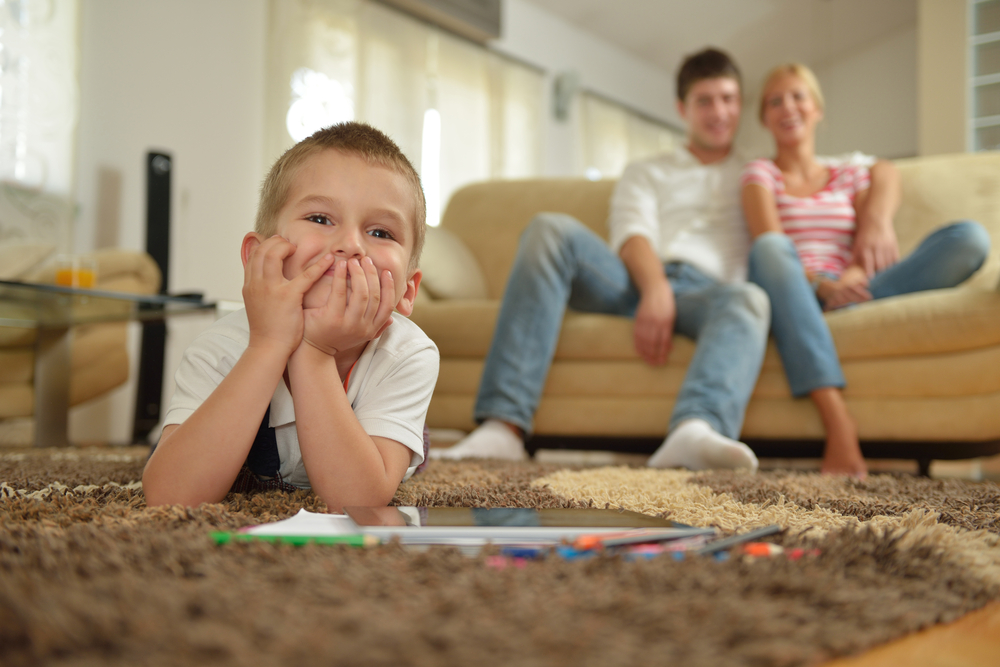
Upholstery and furniture collect dirt, hair, oils, and spills easily. Over time, your upholstery can begin to look and smell unclean and show signs of wear. Your furniture is an investment that you want to protect. Regular professional cleanings help keep your furniture and upholstery like new.
Check the Tag
Your furniture tags may seem useless, but they have important information on them. Usually, you can find manufacturer care instructions that inform you on what cleaning products are safe to use on your furniture’s fabric. Using a harmful product can seriously damage your furniture. Furniture tags also include cleaning codes. The codes—W, S/W, and S—let you know what you can use on your furniture. “W” indicates that you should only use a water-based cleaner, while “S” indicates that you should use a solvent-based cleaner. “S/W” means it is safe to use either.
Address Spills Quickly
With any stain or spill, you want to soak it up as much as possible before it settles into your furniture. Once a spill has soaked in, it will be much more difficult to fully clean. Be sure to blot the spill with a rag and avoid rubbing so that the stain does not spread to a larger area.
Vacuum Before Scrubbing
Vacuuming your furniture and upholstery can be one of the most effective ways to clean stains, spills, and buildup of dirt and grime. Just as you vacuum your carpet, you should vacuum your furniture before fully cleaning it. Most vacuums have a fabric brush attachment, which will fluff the fabric’s fibers up, loosening stains and bringing dirt to the surface for easier removal. You can also use the crevice attachment for getting into the creases and cracks of your furniture. Spend extra time vacuuming over the stained area to pull up as much as possible.
Use a Cleaner
Once you have soaked up excess moisture and vacuumed, you can use a cleaner to remove any remaining stains or odors. As mentioned, it’s important to know what products can be used on the fabrics you have so that you don’t damage them. Baking soda is a safe and reliable DIY cleaner. Sprinkling baking soda will help remove both stains and odors. For tougher stains, you can also mix equal parts baking soda and water. However, be careful not to oversaturate your fabrics with water. Use a soft microfiber cloth to blot baking soda on the stain, and vacuum again once the baking soda has set for long enough to work. If you decide to use a commercial cleaner, test on a small, unseen area before applying to an obvious stain to avoid discoloration or damage.
Remove Pet Hair
Pets are a joy, but they can be a source of stress when it comes to keeping your home clean. Pet stains are an obvious nuisance, but pet hair can be a constant and visible problem. A quick and easy cleaning solution for pet hair is to put on rubber gloves and rub your hand over it. This will create static that pulls the hair up, which allows you to vacuum it off. You can also invest in a furniture brush or a vacuum designed for pet hair.
Call a Professional
Regular cleaning of your furniture will keep upholstery free of stains and odors and looking its best. DIY upholstery cleaning is effective for everyday messes and stains, but a professional cleaning service will provide the deepest clean and freshest look for your furniture. A good cleaning can often restore the color and appearance of upholstery to look like new. A professional cleaner can also apply products to protect your furniture from pet urine and other stains.
Get more helpful tips on keeping a clean home by subscribing to our blog!
